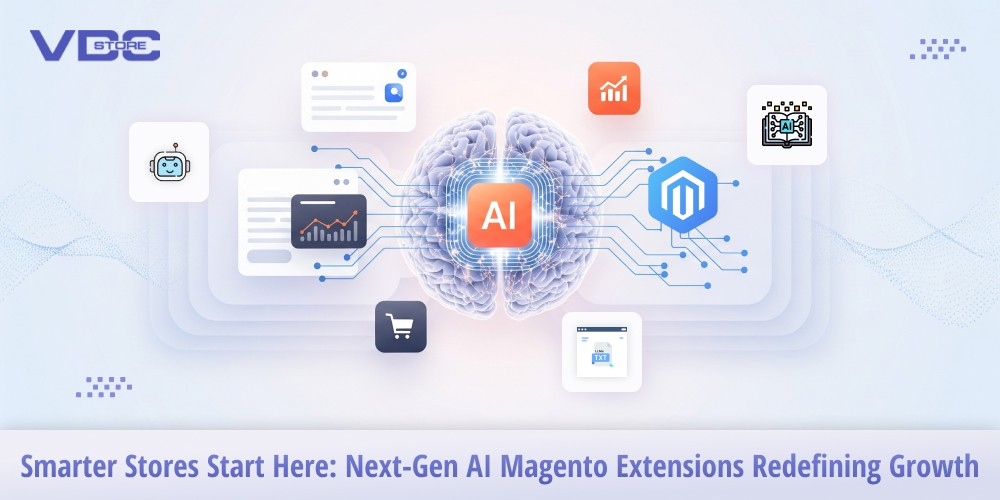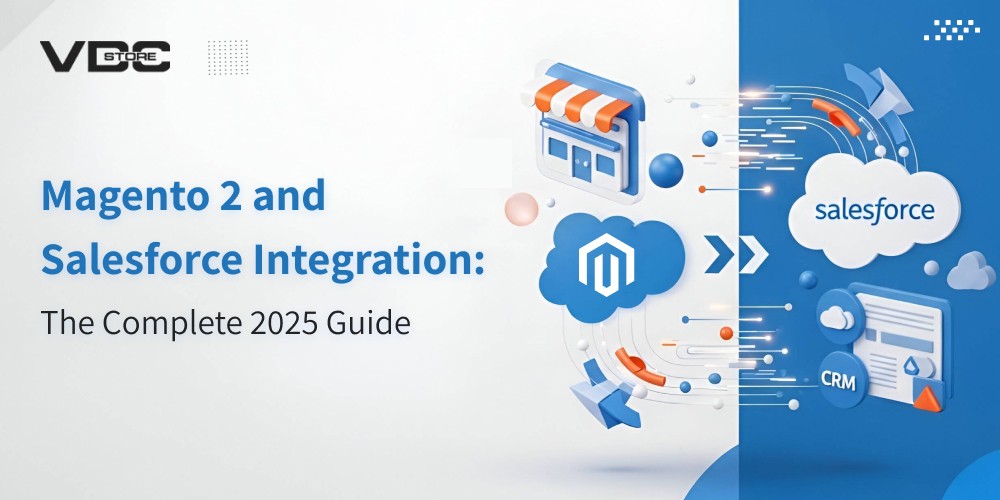Magento 2 and Salesforce Integration: The Complete 2025 Guide
In today’s highly competitive e-commerce landscape, businesses need systems that are not only powerful but also seamlessly connected. Integrating your e-commerce platform with a customer relationship management (CRM) system is crucial for achieving operational efficiency, better customer experiences, and data-driven decision-making. Magento 2 and Salesforce integration has emerged as a leading solution for businesses looking to streamline their operations and scale efficiently. In this comprehensive 2025 guide, we'll explore everything you need to know about connecting Magento 2 with Salesforce.


Introduction to Magento 2 and Salesforce
Magento 2 is one of the most popular e-commerce platforms, known for its flexibility, scalability, and extensive customization options. It allows businesses to create dynamic online stores that cater to a wide range of industries and customer needs.
On the other hand, Salesforce is a leading CRM solution that helps businesses manage customer relationships, automate workflows, and gain insights through data analytics. Combining these two platforms through Magento 2 Salesforce integration enables businesses to bridge the gap between online sales and customer relationship management.
Benefits of Magento 2 Salesforce Integration
Integrating Magento 2 with Salesforce unlocks a host of benefits for e-commerce businesses:
- Unified Customer Data: All customer interactions, purchase history, and preferences are synchronized, giving your team a complete view of each customer.
- Streamlined Sales Processes: Automated workflows reduce manual data entry, allowing sales teams to focus on conversions rather than administrative tasks.
- Enhanced Marketing Capabilities: Integration allows targeted campaigns based on customer behavior, increasing engagement and revenue.
- Inventory and Order Management: Real-time updates between Magento 2 and Salesforce ensure accurate stock levels and order tracking.
- Data-Driven Decision Making: Businesses can generate reports and dashboards combining sales and customer data for actionable insights.
With these benefits, businesses can improve efficiency, enhance customer satisfaction, and drive higher revenues.
Key Features of Magento 2 Salesforce Integration
When implementing Magento 2 Salesforce integration, several key features stand out:
- Automatic Customer Synchronization: Customer accounts, addresses, and contact information are synced automatically.
- Order and Invoice Synchronization: Orders placed on Magento 2 are directly updated in Salesforce for streamlined fulfillment.
- Product Catalog Management: Product data, pricing, and inventory are synchronized between Magento 2 and Salesforce, ensuring consistency.
- Advanced Analytics: Gain insights into customer behavior, sales trends, and marketing effectiveness.
- Customizable Workflows: Businesses can create tailored workflows that align with their operational processes.
These features ensure that integration is not just functional but also enhances overall business operations.
Methods to Integrate Magento 2 with Salesforce
There are several methods for achieving Magento 2 Salesforce integration:
- Third-Party Integration Tools: Platforms like Zapier, Mulesoft, and Celigo provide pre-built connectors for Magento 2 and Salesforce.
- Custom API Integration: For highly specific business needs, developers can use Salesforce and Magento APIs to build a bespoke integration solution.
- Magento Extensions: Several Magento 2 extensions are available that offer ready-to-use Salesforce integration with minimal setup.
Each method has its pros and cons depending on your business requirements, budget, and technical expertise.
Step-by-Step Integration Process
Implementing a smooth integration requires careful planning and execution. Here's a step-by-step integration process for Magento 2 and Salesforce:
- Define Objectives: Identify the goals of integration, such as syncing customer data, automating order management, or improving marketing campaigns.
- Choose an Integration Method: Decide whether to use a third-party tool, Magento extension, or custom API integration.
- Data Mapping: Map the fields in Magento 2 to the corresponding fields in Salesforce to ensure proper data flow.
- Set Up API Connections: Configure API credentials in both Magento 2 and Salesforce.
- Test the Integration: Run tests with a small dataset to ensure data is syncing correctly without errors.
- Go Live: Once testing is successful, implement the integration for your live store.
- Monitor and Optimize: Continuously monitor data flow, fix issues, and optimize workflows for efficiency.
Following this structured process ensures a reliable and efficient integration.
Common Challenges and Solutions
While Magento 2 Salesforce integration offers numerous benefits, businesses may encounter challenges:
- Data Inconsistency: Misalignment between Magento and Salesforce fields can cause errors. Solution: thorough data mapping and validation.
- Complex Workflows: Automating advanced processes may be technically challenging. Solution: leverage custom API integration or experienced developers.
- Performance Issues: Large data transfers can affect system performance. Solution: implement batch processing and optimized APIs.
- Cost Considerations: Integration can be expensive depending on the method and complexity. Solution: plan a clear budget and phased approach.
Understanding these challenges helps businesses prepare and execute integration smoothly.
Best Practices for a Smooth Integration
To ensure a successful Magento 2 and Salesforce connection, follow these best practices:
- Regular Data Audits: Periodically check for synchronization errors or missing data.
- Use Secure API Connections: Protect sensitive customer data during data transfers.
- Involve Stakeholders Early: Coordinate between marketing, sales, and IT teams to align objectives.
- Start Small: Test integration with a limited dataset before full-scale deployment.
- Leverage Automation: Automate repetitive tasks like order updates, reducing manual errors.
By following these best practices, businesses can minimize disruptions and maximize the efficiency of their integration.
Cost & Time Considerations
The cost and time required for Magento 2 Salesforce integration vary based on:
- Method of Integration: Third-party tools may be quicker and cheaper than custom API solutions.
- Complexity of Data: More complex workflows and large datasets require more time and resources.
- Customization Needs: Highly customized workflows or extensions may increase cost and development time.
Typically, a small-to-medium Magento Development Agency can implement integration within 4-6 weeks, while enterprise-level stores may take 2-3 months depending on the scale and complexity.
Conclusion
As e-commerce evolves in 2025, businesses cannot afford disconnected systems. Magento 2 Salesforce integration is a strategic investment that streamlines operations, enhances customer experiences, and drives business growth.
By following the steps outlined in this guide, understanding the benefits, and adhering to best practices, your business can achieve a seamless, high-performing integration.
Whether you're a startup or a large enterprise, planning for cost, time, and technical requirements ensures that your Magento 2 store and Salesforce CRM work together flawlessly. With careful implementation, you can transform your e-commerce operations and unlock new growth opportunities.

 AUD -
Australian Dollar
AUD -
Australian Dollar GBP -
British Pound
GBP -
British Pound INR -
Indian Rupee
INR -
Indian Rupee SGD -
Singapore Dollar
SGD -
Singapore Dollar



